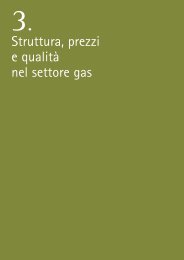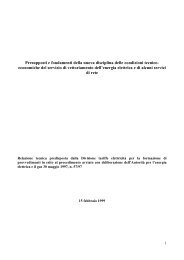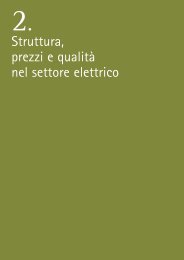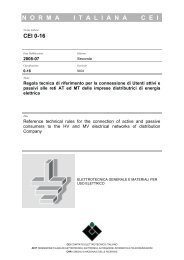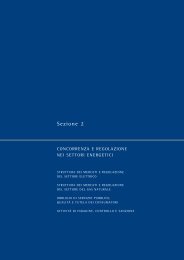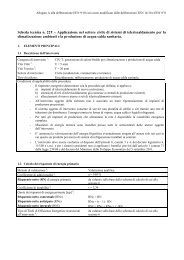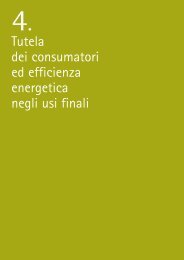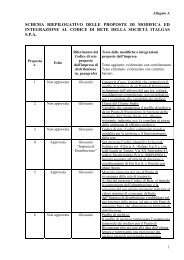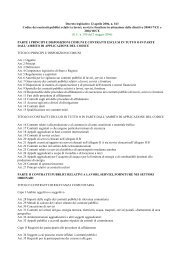Third Benchmarking Report on Quality of Electricity Supply
Third Benchmarking Report on Quality of Electricity Supply
Third Benchmarking Report on Quality of Electricity Supply
- No tags were found...
You also want an ePaper? Increase the reach of your titles
YUMPU automatically turns print PDFs into web optimized ePapers that Google loves.
1.7.9 AIT (Transmissi<strong>on</strong>)Transmissi<strong>on</strong> networks are generally designed to higher standards than distributi<strong>on</strong> networks andas a result faults taking customers <strong>of</strong>f supply are relatively infrequent. However, when there areinterrupti<strong>on</strong>s <strong>on</strong> the transmissi<strong>on</strong> they tend to result in large numbers <strong>of</strong> customers being <strong>of</strong>f supplyand high values for energy not supplied. Figs 1.6 and 1.7 illustrate this clearly, with most countriesshowing average AIT below 10 minutes lost per year but a number <strong>of</strong> countries experiencingpeaks two, three or even five times this level. Such peaks <strong>of</strong>ten make headline news internati<strong>on</strong>allyas well as nati<strong>on</strong>ally, as was the case in the transmissi<strong>on</strong> outages in L<strong>on</strong>d<strong>on</strong> and Birminghamin Great Britain in 2003, the blackouts and load shedding in Italy in 2003 and the transmissi<strong>on</strong> outagein southern Sweden in 2003. The peaks in AIT are generally mirrored by those in ENS,although the percentage change generated in Portugal for AIT in 2000 was higher than that forENS, whilst in Spain the percentage ENS in 2001 was greater than the percentage change in AIT.FIG 1.9 AIT (1999 – 2004)AIT – Minutes lost per year – Transmissi<strong>on</strong> network – all interrupti<strong>on</strong>s50Minutes lost per customer4540353025201510501999 2000 2001 2002 2003 2004YearBelgium_natFinlandFranceGreat BritainHungaryItalyPortugalSpainSweden1.8 Further analysis <strong>of</strong> interrupti<strong>on</strong>s set out in the Annex to this chapterA range <strong>of</strong> additi<strong>on</strong>al analysis has been carried out studying the relati<strong>on</strong>ship between the numberand durati<strong>on</strong> <strong>of</strong> interrupti<strong>on</strong>s and network and customer characteristics. The additi<strong>on</strong>al analysis isset out in the Annex to this chapter. The key findings are set out below:··Excluding excepti<strong>on</strong>al events from short interrupti<strong>on</strong>s data is not a comm<strong>on</strong> practice acrossEurope;As would be expected there is a str<strong>on</strong>g positive correlati<strong>on</strong> between the number <strong>of</strong> interrupti<strong>on</strong>sand the durati<strong>on</strong> <strong>of</strong> interrupti<strong>on</strong>s;26Council <strong>of</strong> European Energy Regulators – Ref: C05-QOS-01-03




